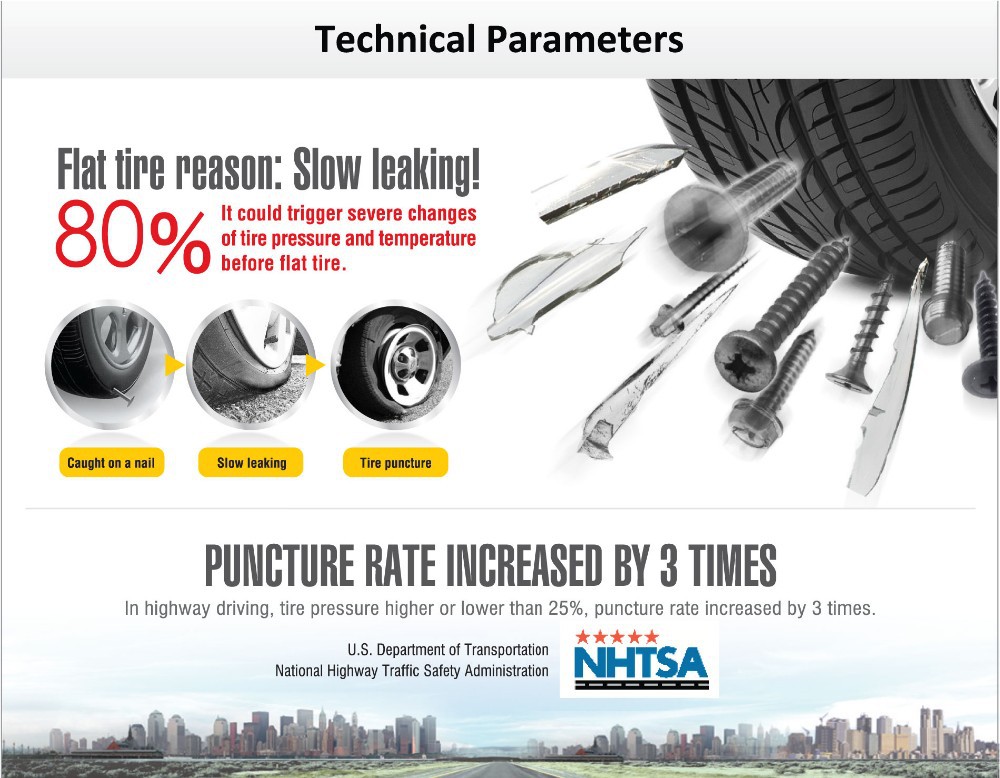A slow tire leak is more than just a nuisance. A leak can lead to low tire pressure. Not to mention, prolonged running on an underinflated tire can lead to more extensive tire damage or even cause a dangerous blowout.
If you’re experiencing a slow leak, here are some things to look for:A tire puncture: It is a common misconception that a puncture will cause the tire to immediately go flat. However, in many cases the object that caused the puncture remains lodged in the tire and prevents the air from leaking out quickly. As with all tire leaks, it is important not to ignore a puncture. Eventually the object will either wear down and/or work its way out of the tire. For more on this read our article How to Repair a Tire with a Safe, Permanent Fix.
Wheel damage: Another common cause for slow tire leaks is damage to the area where the tire bead meets the rim. This type of damage is typically cause by the driver hitting the curb, taking a speed bump at high speeds OR those dreaded potholes! The impact deforms the wheel’s metal surface which may cause the tire to pull away from the mounting surface of the wheel.
Valve stem damage: The third most common cause for slow tire leaks is worn out or damaged valve stems. Time, use and exposure to elements can cause your valve stems to wear out and cause leaks.
Diagnosing your tire leak:
If your vehicle is equipped with TPMS, you will know right away if you have a leak. If the sensor light on your dashboard goes off, you inflate all the tires back to proper pressure and the light goes back on a few days later – you likely have a leak. If your vehicle does not have TPMS, its important to check your tire pressure regularly.
Once you’ve identified that you have a leak, use TECH Chek to locate the source of your leak. Simply spray the product all around the tire.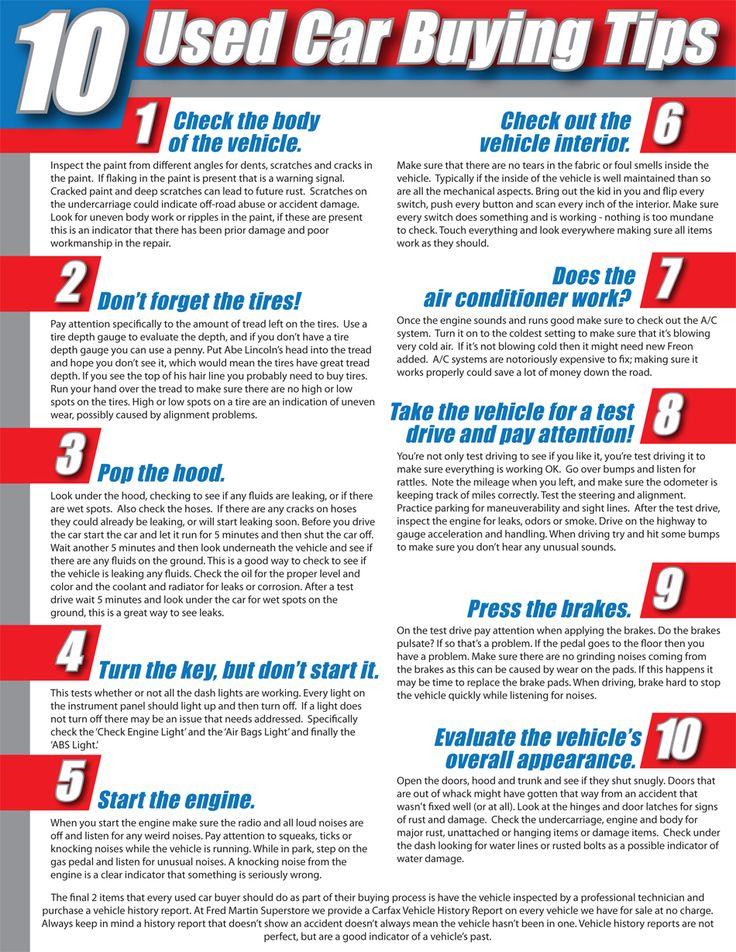 Where the surface of the tire begins to bubble is likely the source of your leak.
Where the surface of the tire begins to bubble is likely the source of your leak.
It’s important to have your tire diagnosed by a professionally trained tire shop or mobile tire repair service as soon as possible. In the case of a puncture, you may want to use a tire repair kit to keep your tire properly inflated until you can have it serviced. The leak should then be permanently fixed using a proper tire repair consisting of a cured rubber stem and repair unit.
If the leak is caused by a damaged valve, a trained tire technician can typically replace the valve at a minimal cost. In some cases, however, the tire may need replaced.
If the leak is caused by a damaged wheel, a tire technician may be able to reseat and seal the tire using a bead sealer. However, if the damage to the wheel is significant, unfortunately that means you may need to replace the wheel itself.
To read more about the types of damage that can and cannot be repaired, click here!
Not only is having slow leaks in your car tires annoying, but it can also compromise your road safety, fuel economy, and tires' lifespan. There are several common causes of slow tire leaks, and it's not always easy to determine which is affecting your tires.
There are several common causes of slow tire leaks, and it's not always easy to determine which is affecting your tires.
Learn how to tell if your tire is losing air, what can cause the issue, and how to stop slow leaks for good.
Tires naturally lose about 1 psi of air per month and should be monitored regularly. A slow tire leak occurs when your tire gradually loses more than this typical air loss. Over time, air leakage can cause a flat or underinflated tire. The source of the leak can be challenging to detect, and unlike a big tire puncture, you'll rarely hear hissing noises when they occur. Each part of a tire is susceptible to slow leaks, making the cause of air loss that much harder to detect.
The first thing you'll probably notice is an illuminated Tire Pressure Monitoring System (TPMS) warning signal on your dashboard, if equipped. The TPMS monitors tire pressure and notifies you when there's a significant PSI issue.
If your TPMS sensor frequently lets you know that one or more of your tires are low in pressure, the chances are likely that you have a slow leak. You can inflate your tires on your next gas pump visit, but if the problem persists, stop by your local Firestone Complete Auto Care center and let us have a look.
Many drivers wonder, “why do my tires keep losing air?” But, slow tire leak causes vary from tiny punctures to wheel and valve stem damage. Whatever the cause, it's essential to prevent air leakage. Driving on a tire with a slow leak can worsen its condition and impair your vehicle's handling, which can be dangerous.
Here are the most common reasons for slow-leak tires.
Tire punctures don't always result in immediate flats or blowouts. In fact, sharp objects like nails, screws, rocks, broken glass, and other road debris can get lodged in the tire and keep the tire "functional" as the air is slowly leaking.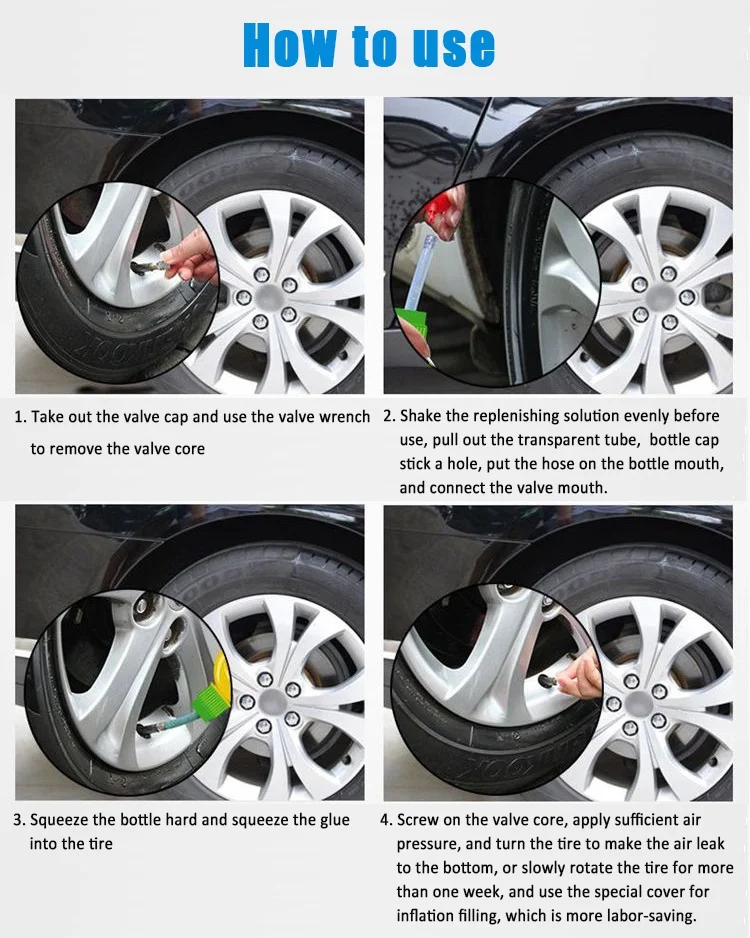 Other times, a sharp object may make a tiny hole and fall out, but you may not notice the immediate effect since the puncture is mild.
Other times, a sharp object may make a tiny hole and fall out, but you may not notice the immediate effect since the puncture is mild.
If your tire is still in good shape and the puncture is repairable, Firestone Complete Auto Care tire repair experts may be able to patch your tire. The solution may be as simple as a tire patch and plug if the puncture is addressed early on.
The valve stem is a part of the wheel that helps regulate tire air pressure. You can release the air or inflate your tires through it. This valve stem is comprised of a few different parts, mainly the valve stem core and the valve stem cap. If you lose the cap, dirt and debris may get stuck around the valve stem core, which can cause air leakage. The valve stem can also become corroded, brittle, or cracked due to combinations of moisture, road salt, chemicals, and age.
It's a good idea to replace your valve stems every time you get a new set of tires. That way, you can help prevent this issue and save yourself the headache of slow tire leaks. That's why our technicians at Firestone Complete Auto Care replace rubber valve stems or install the TPMS service kits with every new tire installation!
That's why our technicians at Firestone Complete Auto Care replace rubber valve stems or install the TPMS service kits with every new tire installation!
Slow tire leaks can also occur where the tire bead meets the wheel's rim. The tire bead should snugly fit the rim because it seals the tire to the wheel for proper inflation. However, the rim can corrode from exposure to road salt and other aggressive agents, leading to tiny crevices where air can escape through the bead-rim connection.
Rim leaks can also result from damaged wheels. So, if you hit a curb or hit a pothole, your slow leaks may come from a damaged rim. Whatever the cause of tire bead leaks, Firestone Complete Auto Care technicians can get to the bottom of it. We can reseat the tire bead or replace the wheels or replace the tire if necessary. Not all tire bead leaks require replacing the wheel, but some do.
Tire damage can develop due to normal wear over their lifespan. Sometimes there is nothing you can do but install new tires. The tread on your tires can wear down, leading to reduced traction and potentially dangerous driving conditions. But worn-down tires can also start leaking air through tiny cracks. Tires should generally be replaced every 25,000 to 50,000 miles, depending on tire condition, the vehicle manufacturer, driving habits, and local road conditions.
Sometimes there is nothing you can do but install new tires. The tread on your tires can wear down, leading to reduced traction and potentially dangerous driving conditions. But worn-down tires can also start leaking air through tiny cracks. Tires should generally be replaced every 25,000 to 50,000 miles, depending on tire condition, the vehicle manufacturer, driving habits, and local road conditions.
Shop tires by vehicle, tire size, and tire type, and book an installation appointment at your local Firestone Complete Auto Care shop today.
To stop a slow leak from a car tire, you first need to diagnose the issue. Then, the tire, wheel, or valve stem can either be repaired or replaced. To diagnose a slow leak yourself, apply soapy water on the tire treads, sidewalls, around the valve stem, and the tire bead area. Leave the soapy tire for a few minutes, and then inspect it for any localized bubbly patches.
Finding slow air leaks can be very tricky so don't feel discouraged if you fail to do it yourself. Visit any of our centers, and our experienced technicians will detect the issue promptly.
Visit any of our centers, and our experienced technicians will detect the issue promptly.
Slow tire leaks are challenging to address, so we recommend scheduling an appointment at your local Firestone Complete Auto Care and letting our experts do everything for you. Our Firestone technicians will provide you with a free courtesy check or a complete vehicle inspection. It's our goal to help you get your car in tip-top shape. Schedule your appointment, and we'll fix your tires’ slow air leaks in no time. Most of our stores are open nights and weekends, so we are usually available when you are.
Fresh number
RG-week
Homeland
thematic applications
Union
Fresh number 26.12.2020 08:31
Boris Zakharov Boris Zakharov
A constantly flat tire of a car can exhaust the nerves of even inveterate phlegmatic people. Moreover, a visit to a car service or a tire fitting does not guarantee that the specialists will immediately find the reason for the decrease in pressure in a tubeless tire. Let's find out what to pay attention to in such an unpleasant situation.
Let's find out what to pay attention to in such an unpleasant situation.
iStock. Another thing is hidden defects, for the detection of which it will be necessary to resort to a number of tricks.
What will the pros do? First, he pumps the problem wheel to 1.5 - 2 atmospheres and tries to determine the place of the puncture or cut by ear - it is very likely that the tire will emit a characteristic whistle at the place of the defect. If this tactic does not help, we turn to water procedures with soap. First, we will try to identify a puncture with little blood - we take a soapy solution and pour it over the tire.
If we are talking about the front wheel, you can not even dismantle it, but jack up the car and turn it slowly, spraying the rubber with soapy water. Our goal is to notice the appearance of foam and bubbles on the tire. Sometimes the problem area helps to identify the blurring and simultaneous pumping of the tire with a pump. The puncture did not give itself away again? You can try to remove the wheel and lower it entirely into a container of water, pressing on the sidewalls and again looking for bubbles.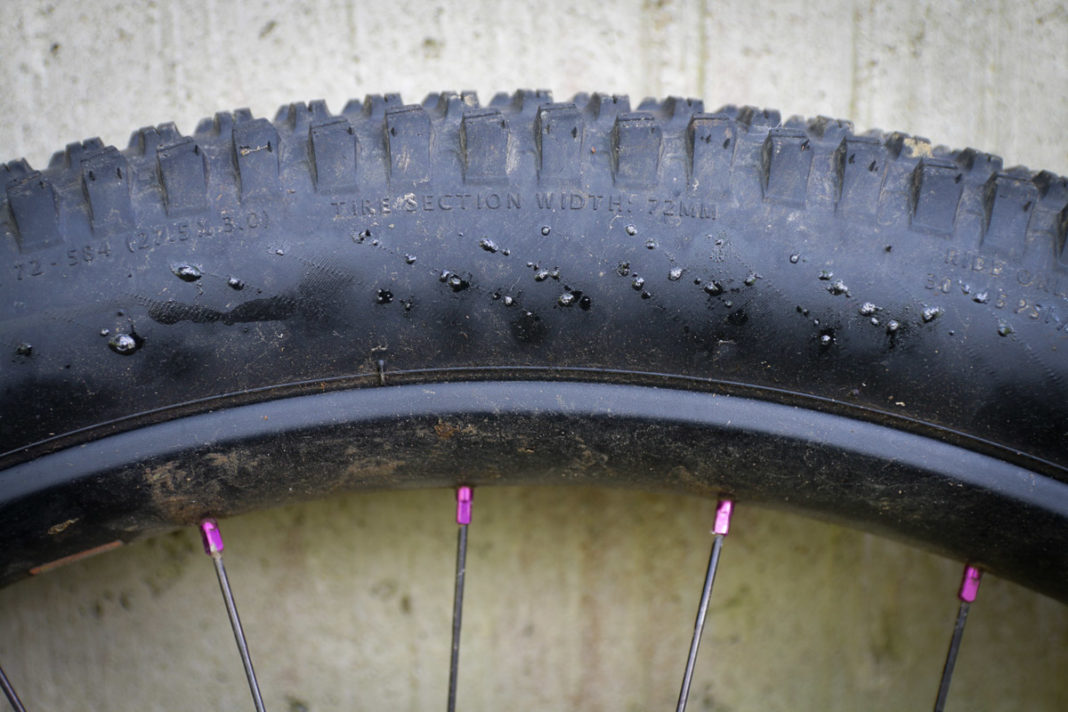
Look for a hidden defect from the inside
However, it happens that it is not possible to find the place of damage during the water-soap procedures. There may be several reasons. For example, a tire can be etched with air due to a very small wire, needle or stud that is not visible to the naked eye, but which can still be felt.
To do this, you will have to disassemble the wheel, arm yourself with a rag or napkin and run it along the inner area of the tire. It is very likely that the fabric will catch on this inconspicuous sharp object.
Sometimes air bleeding can also cause internal damage to the cord, which happens due to careless driving on broken roads. It even happens that on a "spike" when driving through pits, the heel of a spike (mostly hand-made) pierces the tire from the inside. Be that as it may, if you find a sharp object sticking out from inside the tire, look at the situation. If the matter is in a small carnation or a needle, we repair it. If damage to the cord is detected, as well as a hernia, it is recommended to replace the tire - further operation is unsafe.
If damage to the cord is detected, as well as a hernia, it is recommended to replace the tire - further operation is unsafe.
Micro cracks
Sometimes a problematic spot in a tire cannot be identified either with a foam solution or by feeling the inner surface of the tire. In this case, pay attention to the condition of the sidewalls.
If the tire is old or the owner practices parking close to the curbs, and also stores the wheels on the balcony under the scorching sun, microcracks may form on the sidewalls.
Through them, moisture enters the cord, which is fraught with deformation of the entire frame. Unfortunately, cracks, like hernias, are not repairable. Therefore, if the recesses are small, no more than 1-2 mm deep, we put such wheels on the rear axle and drive for some time exclusively in the city (not at high speeds). Or, as an option, you can contact the tire shop, where such defects will be eliminated on a special machine by melting rubber. But the office most likely will not give guarantees for such work.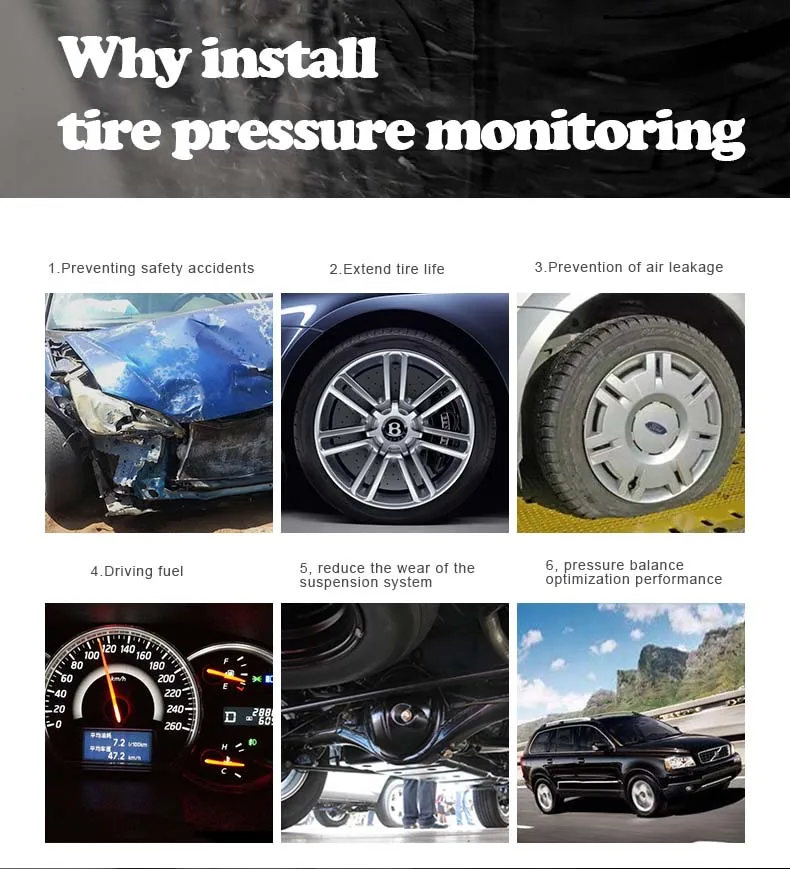 If the cracks are larger than 2 mm, we already definitely throw out such a wheel and put a new one.
If the cracks are larger than 2 mm, we already definitely throw out such a wheel and put a new one.
See nipple
It is quite common for a tire to deflate also because of a defective nipple. They can break here as metal structural elements (you can verify this by simply moistening the surface of the nipple with saliva and tracking air bubbles).
In this case, to solve the problem, it is enough to turn the metal spool clockwise.
You can also replace the spool, since the process is not difficult, although it requires skill. We unscrew the old spool and immediately install a new one in its place, and we do it quickly, overcoming the pressure of the outgoing air.
It also happens that air escapes from the rubberized nipple valve. From operation, it can be erased and this will reduce the density of its mating with a metal tube. In this case, again, the road is for you - in tire fitting. There, the wheel is disassembled, the damaged nipple is pulled out with pliers and a new one is installed.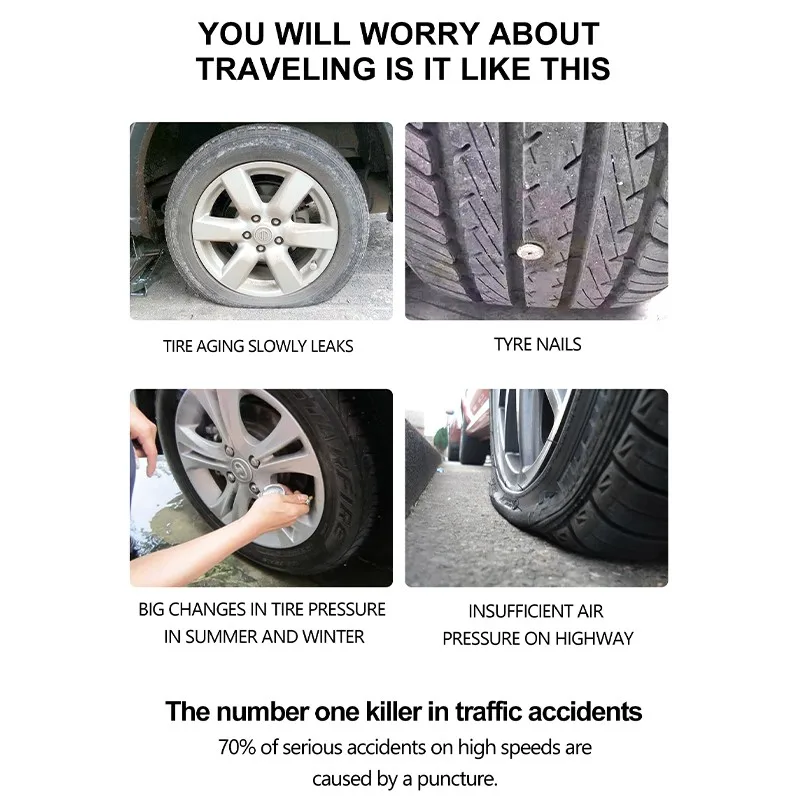
See rim
Finally, it is not uncommon for tires to be flattened due to deformation of the rims. The process may well start the careless passage of large pits, when the suspension reacts to the rebound, the tire is crushed, and the disc rim beats against unevenness. It is quite possible to eliminate wrinkling of the surface of the discs at the same tire fitting.
The cast wheel is rolled on a special machine, and the forged wheel is restored using a special press and rolling. Difficulties arise except with the repair of the most hard forged wheels.
Here, heating will most likely be required to repair the damage, since it is most likely impossible to roll the discs using the machine alone. And it also happens that rust eats up the inner edge of the rim (most often stamped wheels), and the air escapes through the gaps formed. The solution to the problem is obvious - the wheel is disassembled, problem areas on the disk are cleaned and primed.
Share
The main thing today
Mishustin assured foreign companies that remained in Russia of support
Medvedev is sure that in the near future Russia will have a full line of drones adopted in April
Bloomberg: US fears to be cornered by China's peace plan for Ukraine
Zaporizhia Oblast MIA: Police officer injured in explosion in Melitopol
Banks of Great Britain, Switzerland and Norway plan to raise the key rate
Seeing a flat tire on their car, the owner blames everything on self-tapping screws, holes with sharp edges - anything but the vehicle structure.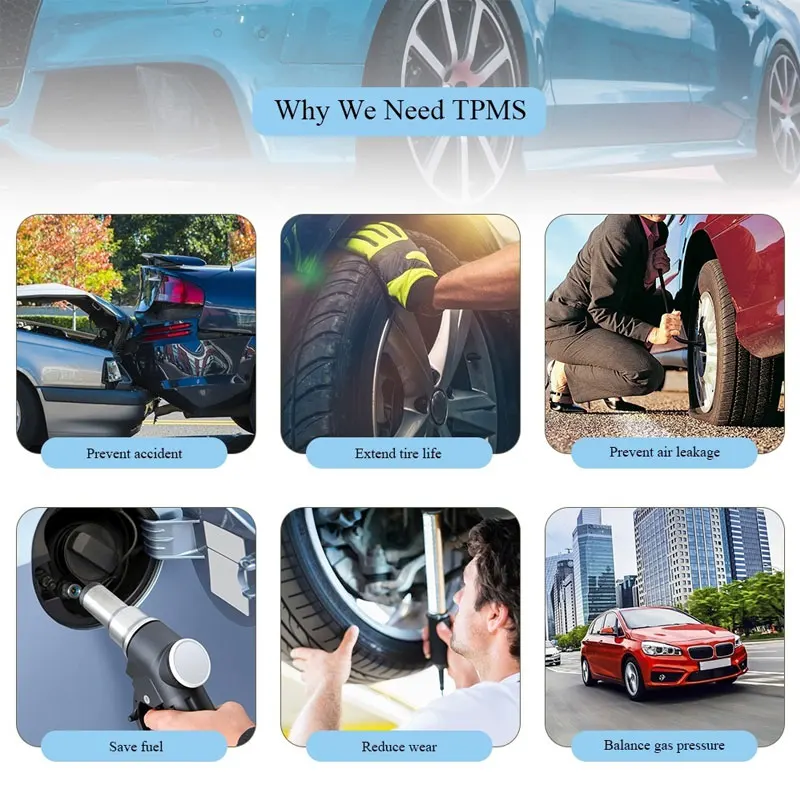
In this case, it often happens that the tire is completely intact. Then why does your trip start with a pump anyway?
To answer the question why lower tubeless tires can be quite a long time. Let's start with the fact that many owners want to buy alloy wheels for cars. Unfortunately, alloy wheels for tubeless tires can be easily dented in the nearest pit. Yes, high quality alloy wheels are durable, but they also have a limit of strength.
If deformation of light alloy wheels occurs, then the slightest violation of the geometry is enough for the tire to fit the disk to become loose. A crack in the cast disk is also possible, which is easy to get without noticing a hole in the road. Often, cracks in alloy wheels are invisible to the eye, but the wheel is flattened, although the tire is intact. You may not think that the reason lies outside the tire.
But let's move from the rim to the tire, starting with the glue that connects them.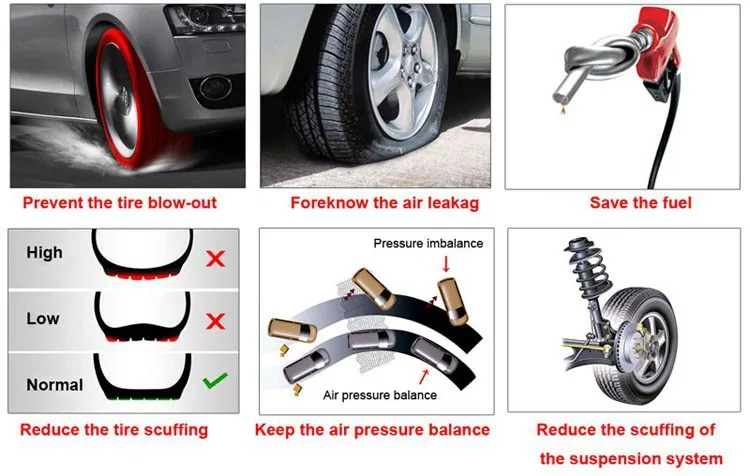 It is believed that high-quality tire fitting allows you to drive about 30,000 km without problems. If you buy glue for tubeless tires of poor quality, cheap, then it is unlikely that it will last that long. Further, tubeless tires are lowered, albeit a little, and the services of a tire shop are again needed.
It is believed that high-quality tire fitting allows you to drive about 30,000 km without problems. If you buy glue for tubeless tires of poor quality, cheap, then it is unlikely that it will last that long. Further, tubeless tires are lowered, albeit a little, and the services of a tire shop are again needed.
Time, improper storage of tires and violation of operating conditions will surely lead to the fact that a tubeless tire will flatten for seemingly incomprehensible reasons. But it's simple: the tires lose their shape and do not hold well on the rims. Here it doesn’t matter which glue for tubeless tires to choose, you need to change the car’s “shoes”.
The fact is that worn tires not only lower, but also give rise to a beating on the steering wheel, have a detrimental effect on suspension components, increasing fuel consumption along the way. If you constantly drive on lowered wheels, then the wear of the tread along the edges will be especially pronounced. In the end, riding on flat worn tires will end up. That a hernia will appear on the rubber, and it will burst.
That a hernia will appear on the rubber, and it will burst.
But not only the residual tread depth of tires indicates wear. Time, especially spent in the sun, also does not spare rubber. If the through crack on the tire is at least a couple of microns in size, tubeless tires are lowered, forcing the motorist to regularly pump up the wheels. It is best not to ride on such rubber, as it can easily burst.
The final reason why tires are flat in general is the nipple. Regular replacement of the spool is required, otherwise the tire descends through the nipple, and you are looking in vain for the reasons. At this time, the spool passes air in the opposite direction, the wheel descends without being punctured. To begin with, you can wrap the spools tighter, but if this does not help, change.
As you can see, tubeless tires can actually run flat without a single puncture from a nail, self-tapping screw, broken glass or a sharp stone. There are many reasons for this, and you need to know the problem in person in order to successfully solve it.